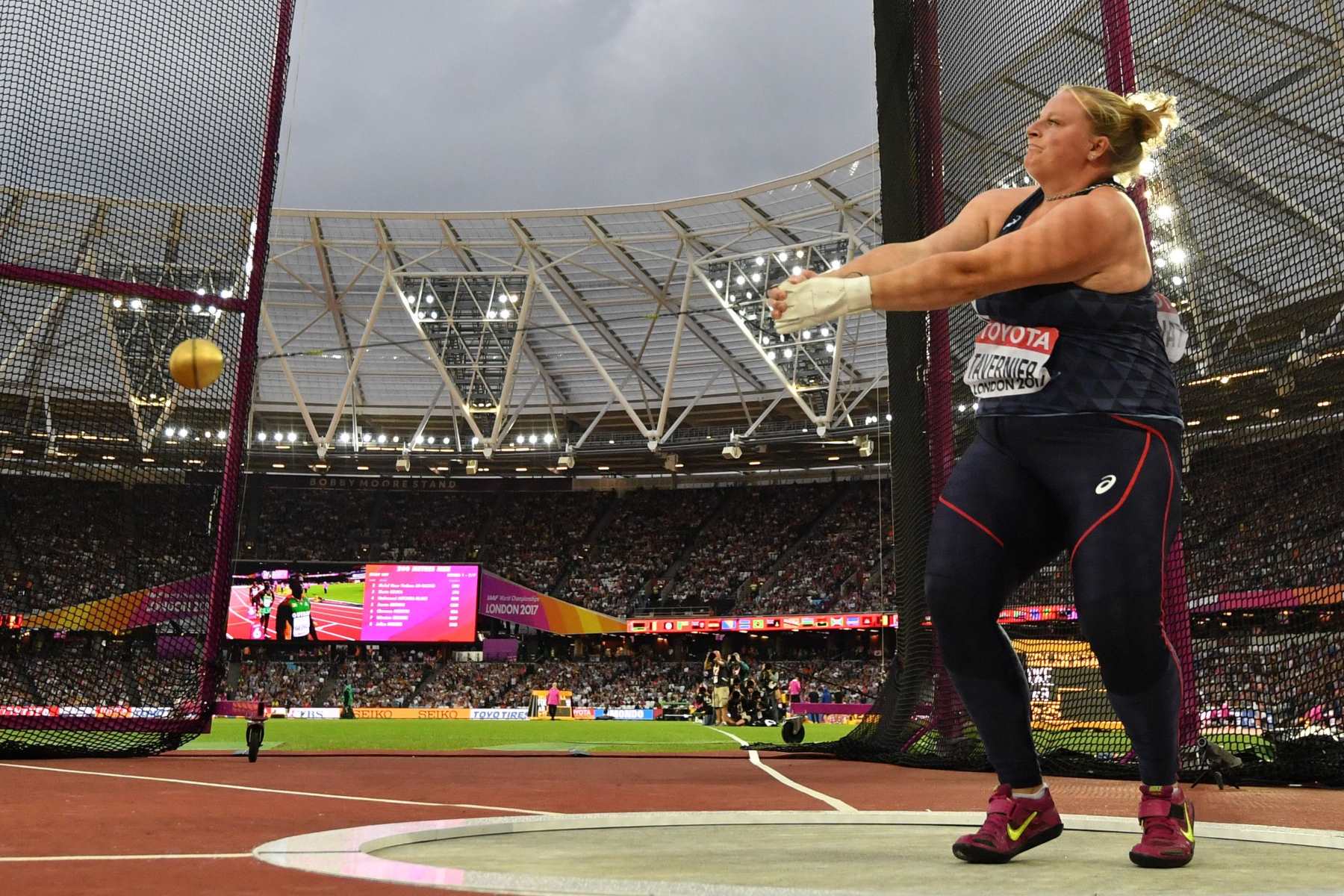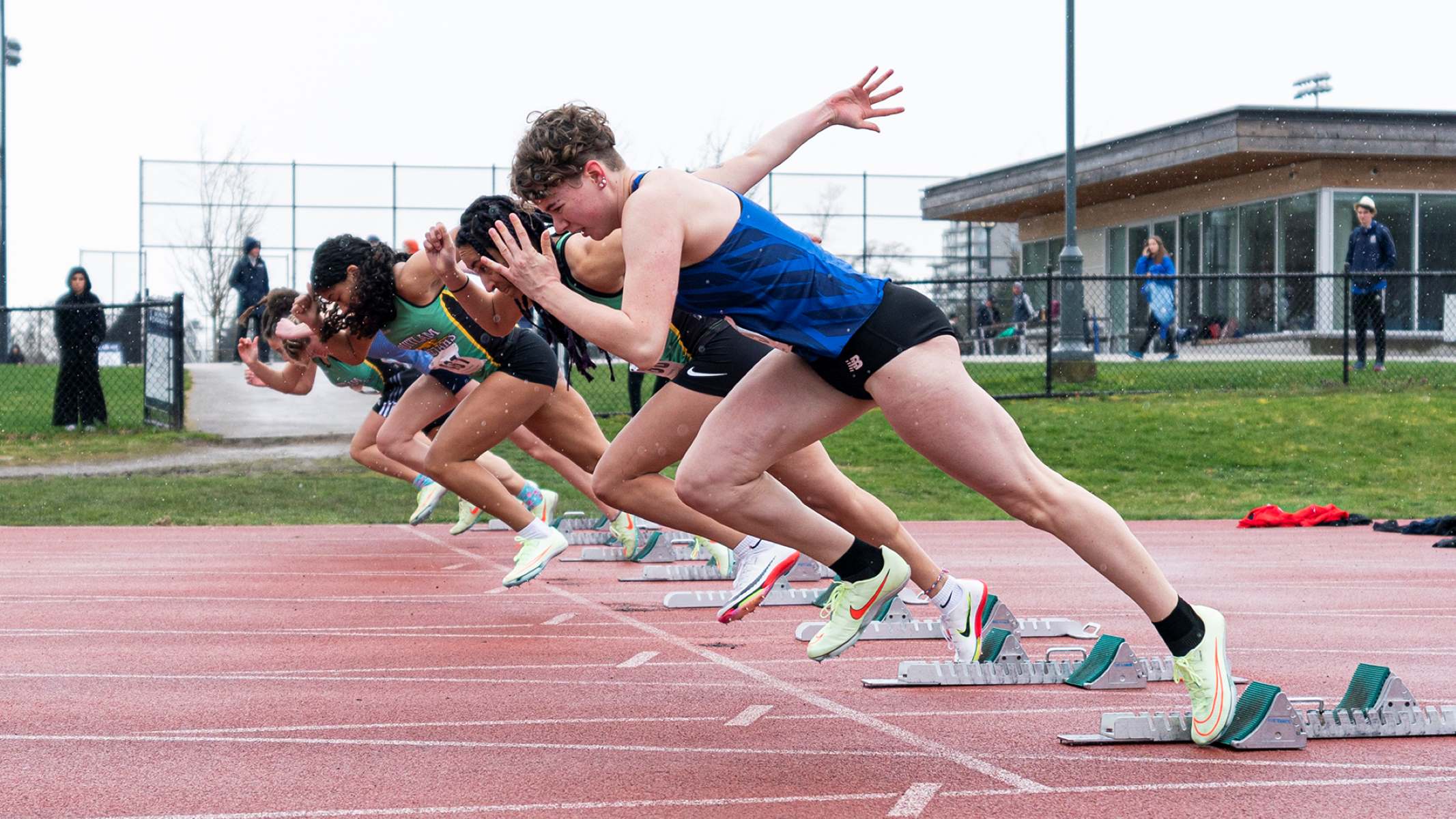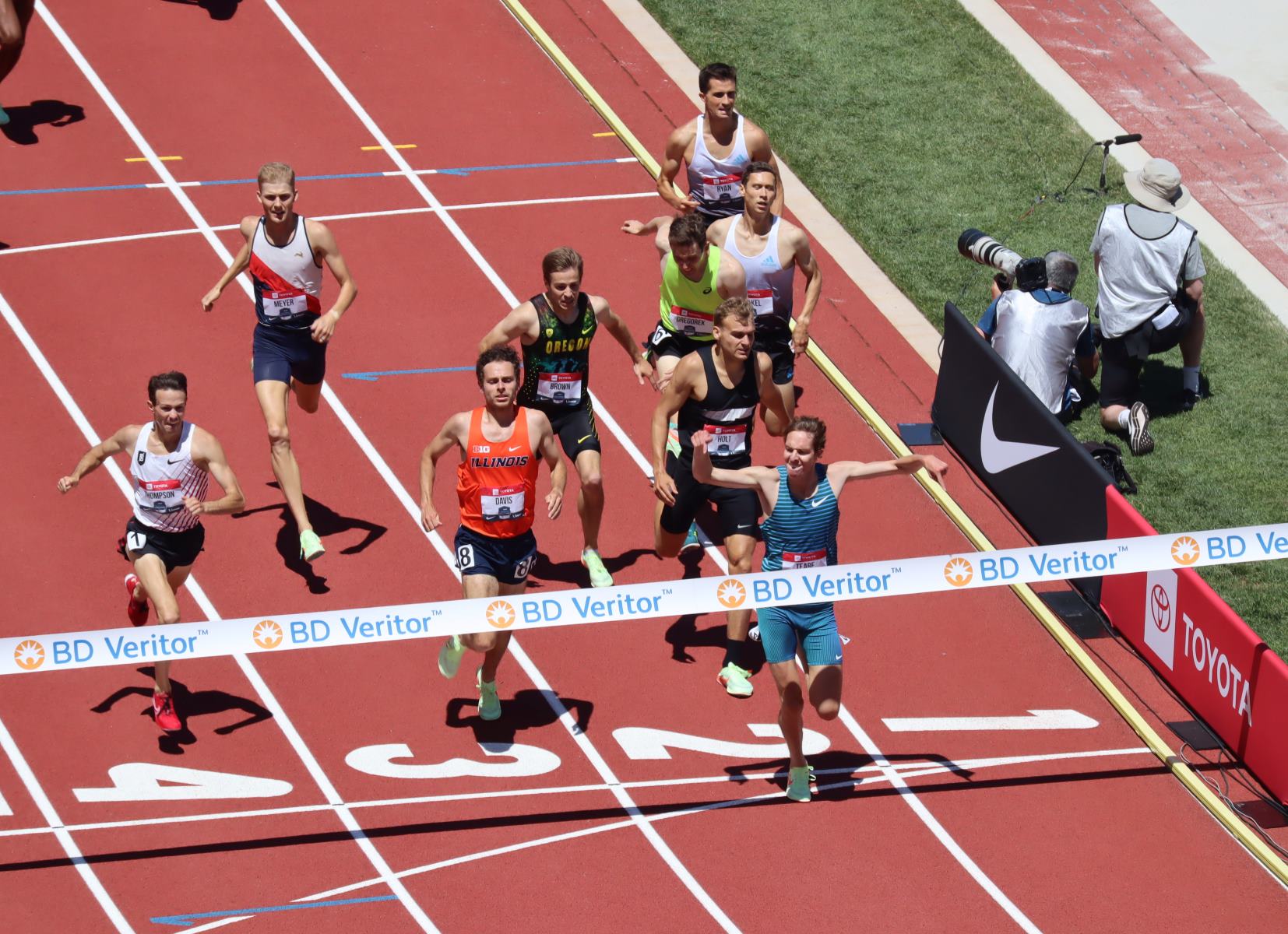

Featured
What Is A Hammer In Track And Field
Modified: January 22, 2024
Discover the definition and significance of a hammer in track and field, as it takes center stage in this featured event showcasing strength, skill, and precision.
Introduction
Welcome to the thrilling world of track and field! In this exhilarating sport, athletes compete against each other in a variety of events, showcasing their speed, strength, and agility. One event that commands attention and captures the essence of athleticism is the hammer throw.
Originating from ancient Celtic traditions and later refined by the Scottish, the hammer throw has evolved into a captivating spectacle in modern track and field competitions. This discipline demands a unique blend of strength, technique, and precision. It combines raw power with finesse, making it a captivating event for spectators and a true test of athletic prowess.
The hammer throw involves athletes spinning multiple times while hurling a heavy metal ball attached to a wire. As the hammer travels through the air, it reaches remarkable heights and distances, leaving spectators in awe. The tension builds as the athlete navigates the circular throwing cage, exerting incredible force to propel the hammer towards its mark.
This article delves into the world of the hammer throw, exploring its history, the equipment used, the technique and rules involved, and the training and conditioning required to excel in this event. We will also highlight some notable hammer throwers who have left an indelible mark on this discipline.
So, brace yourself as we embark on a journey into the captivating realm of the hammer throw. We will unravel the mysteries, explore the techniques, and uncover the secrets of this mesmerizing track and field event. Whether you are a seasoned track and field enthusiast or a newcomer to the sport, this article will give you a deeper appreciation for the athleticism and skill demonstrated by hammer throwers.
History of Hammer Throw
The hammer throw can trace its origins back to ancient times, where it was a prominent event in Celtic festivals. Historians believe that the Celts used a variation of the hammer throw as a form of training for war, as it built upper body strength and coordination.
As the sport evolved, it gained popularity in Scotland. In the 16th century, the Scottish Highland Games featured a hammer throw event, known as “throwing the weight.” The early hammers were made of stone or metal and had a wooden handle.
In the 19th century, the weight of the hammer increased, and the handle shape was modified to allow for better control and technique. The implementation of standardized rules and regulations further propelled the hammer throw into the realm of organized sports.
The first recorded hammer throw competition took place in England in 1866, and it quickly spread to other parts of Europe. By the early 20th century, the hammer throw became an integral part of track and field competitions.
Throughout its history, the hammer throw has undergone various modifications to ensure fair competition and enhance safety. In the early days, the throwers could balance on a wooden stand during the throw, but this practice was discontinued due to safety concerns.
Today, the hammer throw is a staple event in track and field championships, including the Olympic Games and World Championships. It continues to captivate audiences with its combination of sheer power, technical skill, and graceful execution.
The history of the hammer throw showcases its evolution from an ancient Celtic tradition to a recognized track and field event. With its rich heritage and continuous development, the hammer throw remains a testament to the enduring legacy of athletic prowess and human achievement.
The Hammer Event in Track and Field
As one of the throwing events in track and field, the hammer throw showcases the exceptional strength, technique, and coordination of its athletes. It requires a unique set of skills and a deep understanding of the mechanics involved in propelling the heavy metal ball towards great distances.
The hammer throw is a highly technical event that challenges athletes both mentally and physically. Competitors begin by gripping the handle of the hammer, which is attached to a wire or steel cable. The objective is to generate maximum rotational force by spinning multiple times before releasing the hammer.
Athletes perform within a throwing circle that measures 2.135 meters in diameter, with a wire or cage enclosure for safety. The men’s hammer typically weighs 7.26 kilograms, while the women’s hammer weighs 4 kilograms.
The technique in hammer throwing involves a series of precise and coordinated movements. The athlete starts by spinning in a designated direction, building momentum and generating angular velocity. As the athlete completes the spins, the body becomes an integral part of the power generated to propel the hammer. Timing, rhythm, and control are crucial to achieve maximum distance.
Once the athlete has reached the desired velocity, they release the hammer, aiming to achieve a clean and controlled throw. The hammer travels through the air, reaching impressive heights and distances. It requires exceptional skill to maintain balance and stability throughout the motion, as well as the ability to visualize the optimal release angle for maximum distance.
The hammer throw is not only a test of strength but also a display of technique and finesse. It demands a high level of core strength, flexibility, and coordination to execute the spins and generate the necessary force. Proper weight shifting, body positioning, and footwork are vital components of a successful throw.
As with other track and field events, fair play and sportsmanship are paramount in the hammer throw. Athletes must adhere to strict rules and regulations regarding fouls, which include stepping out of the throwing circle or touching the ground outside of the ring during the throw.
The hammer event in track and field is a visually stunning spectacle that showcases the incredible athleticism of its participants. It combines raw power, precision, and strategy to produce awe-inspiring performances. Whether you are a competitor or simply a spectator, the hammer throw never fails to captivate and leave a lasting impression.
Equipment Used in Hammer Throw
The hammer throw requires specialized equipment to ensure safety and optimal performance. These tools are meticulously designed to withstand the immense forces exerted during the event and to assist the athletes in achieving maximum distance.
The primary piece of equipment in the hammer throw is, of course, the hammer itself. It consists of a heavy metal ball, typically made of iron or steel, attached to a steel wire or cable. The ball has a swivel point that allows for rotation during the throw. The weight of the hammer varies depending on the gender and age category of the competitors.
The handle of the hammer is an essential component that provides grip and control. It is usually made of a durable material, such as wood, fiberglass, or carbon fiber. The handle’s length can also differ based on individual preferences and throwing technique.
The throwing circle, also known as the hammer ring, is another crucial piece of equipment. It is a 2.135-meter diameter circle marked on the ground, usually made of concrete or synthetic material. This circle provides a designated area for the athlete to perform the throw and maintain stability during the rotational movements.
To ensure the safety of both the athletes and the spectators, a wire or cage enclosure surrounds the throwing circle. This barrier prevents the hammer from straying off-course and potentially causing harm. The cage is designed to contain the hammer’s trajectory and protect everyone involved in the event.
A durable and non-slip surface is essential within the throwing circle. It allows the athletes to generate maximum force and rotational power without the risk of slipping or losing footing. Common materials used for the surface include concrete, asphalt, or specialized synthetic surfaces designed for traction and grip.
For official competitions, the equipment used in the hammer throw must comply with the regulations set by governing bodies such as the International Association of Athletics Federations (IAAF) and the World Athletics. Compliance ensures fairness and uniformity, as well as the safety of the athletes.
Although seemingly simple in concept, the equipment used in the hammer throw is carefully crafted and designed to withstand the tremendous forces exerted by the athletes. It allows them to showcase their strength and technique while ensuring their safety during this demanding and thrilling event.
Technique and Rules of Hammer Throw
The hammer throw is a highly technical event that requires athletes to master a specific throwing technique while adhering to a set of rules and regulations. A combination of strength, coordination, and precision is crucial to achieve optimal performance in this captivating discipline.
The technique of the hammer throw can be broken down into several key components. The first step is the grip, where the athlete firmly grasps the handle of the hammer. This grip must be secure to prevent any mishaps during the throw.
The athlete begins by standing within the throwing circle, facing away from the direction they are going to spin. They take a few preparatory swings to generate momentum and initiate the spinning motion.
As the swings progress, the athlete executes a series of rotational movements. Typically, four to six spins are performed to build up angular velocity and generate power. These rotations help store energy and prepare the body for the release of the hammer.
Timing and coordination are crucial during the spins. The athlete must maintain balance and control throughout the motion to harness the maximum force generated. Proper weight shifting, footwork, and body positioning play pivotal roles in achieving a fluid and powerful throw.
When the athlete feels ready, they release the hammer at the optimal moment. The release must be smooth and controlled, ensuring that the hammer follows a trajectory that maximizes distance. The athlete must remain within the throwing circle until after the hammer has been released, avoiding any fouls.
In terms of rules, there are several regulations that athletes must adhere to. The hammer must be thrown from behind the line of the throwing circle, ensuring a fair and consistent starting point for all competitors. The hammer must also be thrown within the confines of the throwing sector, which is marked with lines or boundaries to determine the validity of the throw.
Additionally, athletes must avoid crossing or touching the inner rim of the circle or the ground outside of the circle during the throw. Such fouls can result in disqualification or a nullified throw.
It is also important to note that safety is a top priority in the hammer throw. Athletes and officials must ensure that the throwing area is clear of any obstacles or spectators during the event to prevent accidents or injuries.
The technique and rules of the hammer throw require athletes to combine strength, precision, and finesse in order to achieve optimal results. By mastering the intricacies of the technique and abiding by the rules, athletes can fully showcase their abilities and leave an indelible mark on this captivating track and field event.
Training and Conditioning for Hammer Throw
The hammer throw is a physically demanding event that requires athletes to possess a unique blend of strength, power, flexibility, and coordination. To excel in this discipline, athletes must undergo specialized training and conditioning programs designed to enhance their performance and minimize the risk of injury.
Strength training forms the foundation of hammer throw preparation. Athletes focus on exercises that target the muscles essential for generating power in the throw, such as the legs, core, and upper body. Squats, deadlifts, lunges, and bench presses are common strength exercises included in the training regimen.
Explosive power is crucial for a successful hammer throw. Athletes incorporate plyometric exercises, such as box jumps, medicine ball throws, and explosive push-ups, to improve the speed and force of their movements. These exercises help develop fast-twitch muscle fibers, allowing athletes to generate greater power in their spins and throws.
Flexibility and mobility are also essential components of hammer throw training. Athletes incorporate dynamic stretching, foam rolling, and mobility exercises to improve range of motion and prevent muscle imbalances. Flexibility in the hips, shoulders, and thoracic spine is particularly important for executing the rotational movements with fluidity and efficiency.
In addition to physical conditioning, technique training is vital for hammer throwers. Athletes work closely with coaches to develop and refine their throwing technique, focusing on proper body positioning, footwork, and timing. Regular practice of the spins and releases helps athletes ingrain the correct sequences of movements and develop muscle memory.
Mental preparedness is also key for hammer throwers. The ability to focus, visualize successful throws, and overcome the pressure of competition is crucial. Athletes incorporate mental training techniques, such as visualization exercises and meditation, to enhance their mental resilience and maintain a calm and confident mindset during competitions.
To simulate the demands of the hammer throw, athletes incorporate specific drills into their training sessions. These drills include spin drills, release drills, and strength-based throws. Such drills allow athletes to refine their technique, improve their balance and coordination, and build the necessary strength and power for the event.
Proper recovery and injury prevention are paramount for hammer throwers. Athletes prioritize rest and adequate sleep to allow their bodies to recover from intense training sessions. They also incorporate mobility exercises, massage, and foam rolling to alleviate muscle soreness and prevent overuse injuries. Regular communication with coaches and sports medicine professionals is crucial to address any potential concerns and ensure the athlete’s well-being.
Training and conditioning for the hammer throw require a comprehensive and well-rounded approach. Athletes must focus on developing the necessary strength, power, flexibility, and technique while also maintaining their mental resilience. With proper training and dedication, athletes can maximize their potential and achieve remarkable performances in this thrilling track and field event.
Notable Hammer Throwers
Over the years, the hammer throw has produced countless exceptional athletes who have left an indelible mark on the sport. These notable hammer throwers have showcased their incredible strength, technique, and determination, setting records and inspiring future generations of competitors.
One name that stands out in the history of hammer throwing is Anita Włodarczyk. The Polish athlete is widely regarded as one of the greatest hammer throwers of all time. Włodarczyk has dominated the event, winning multiple Olympic gold medals and setting multiple world records. She has consistently pushed the boundaries of the sport and remains a formidable force in hammer throwing.
Another outstanding hammer thrower is Yuriy Sedykh from the Soviet Union. Sedykh set one of the longest-standing world records in the hammer throw, a remarkable distance of 86.74 meters, which he achieved in 1986. His technique and power were unrivaled, and he was a dominant force in the sport during his career.
One cannot discuss hammer throw without mentioning Paweł Fajdek from Poland. Fajdek has emerged as one of the top hammer throwers in recent years, winning multiple world championships and establishing himself as a true contender in the sport. His incredible power combined with technical expertise has earned him numerous accolades and admiration from fans and fellow athletes.
Betty Heidler from Germany is another notable figure in the hammer throw. She held the world record for women from 2011 to 2015, and her consistency and technical prowess have made her a respected competitor in the event. Heidler’s achievements have solidified her place in the history of hammer throwing.
The list of notable hammer throwers also includes names like Koji Murofushi from Japan, who won Olympic gold and made significant contributions to the sport, and Ivan Tikhon from Belarus, a consistent presence in major competitions and a highly respected hammer thrower.
These athletes, along with many others, have elevated the hammer throw to new heights and inspired countless individuals to pursue the sport. Their dedication, skill, and unwavering passion for hammer throwing have cemented their places in the annals of track and field history.
As the hammer throw continues to evolve, new generations of hammer throwers will emerge, looking to make their mark on the sport. These notable athletes serve as role models and inspire future champions to strive for greatness in this captivating and challenging discipline.
Conclusion
The hammer throw is a mesmerizing event that combines power, technique, and precision. Its rich history and evolution make it one of the most captivating disciplines in track and field. From its ancient origins to its prominence in modern-day competitions, the hammer throw continues to captivate and inspire athletes and spectators alike.
We have explored the history of the hammer throw, tracing its roots back to ancient Celtic traditions and Scottish Highland Games. We have delved into the equipment used, the techniques employed, and the rules that govern this awe-inspiring event. From the specialized hammers to the precise spins and throws within the designated throwing circle, the hammer throw showcases the exceptional athleticism and skill of its competitors.
Training and conditioning play a vital role in preparing hammer throwers for the demands of the sport. The combination of strength, power, flexibility, and technique training is crucial for athletes to achieve optimal performance. Mental preparedness and proper recovery strategies are equally important to ensure the athletes can compete at their best and minimize the risk of injury.
We have also highlighted some notable hammer throwers who have made a lasting impact on the sport. From record-breakers like Anita Włodarczyk and Yuriy Sedykh to rising stars like Paweł Fajdek, these athletes have pushed the boundaries of what is possible in the hammer throw. Their achievements inspire and motivate future generations to pursue greatness in this challenging event.
In conclusion, the hammer throw is a captivating and technically demanding event within track and field. It requires a unique combination of strength, technique, and mental fortitude. The rich history, impressive equipment, and notable athletes all contribute to the enduring appeal of the hammer throw. Whether you are a competitor or a passionate spectator, the hammer throw never fails to impress and inspire with its raw power and remarkable athleticism.









